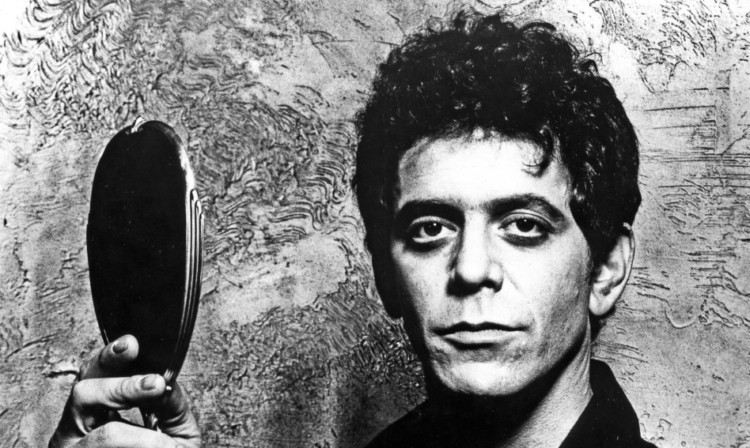Tributes have poured in for Lou Reed, the punk poet of rock ‘n’ roll who profoundly influenced generations of musicians who has died at 71.
Reed, who was leader of the Velvet Underground and remained a vital solo performer for decades, died in New York state of an ailment related to his recent liver transplant, according to his literary agent, Andrew Wylie, who said he had been in frail health for months.
Reed shared a home with his wife and fellow musician Laurie Anderson, whom he married in 2008.
Reed never approached the commercial success of such superstars as the Beatles and Bob Dylan, but no songwriter to emerge after Dylan so radically expanded the territory of rock lyrics. And no band did more than the Velvet Underground to open rock music to the avant-garde – to experimental theatre, art, literature and film, to William Burroughs and Kurt Weill, to John Cage and Andy Warhol, Reed’s early patron.
Indie rock essentially began in the 1960s with Reed and the Velvets. Likewise, the punk, New Wave and alternative rock movements of the 1970s, 80s and 90s were all indebted to Reed, whose songs were covered by R.E.M., Nirvana, Patti Smith and countless others.
“The first Velvet Underground record sold 30,000 copies in the first five years,” Brian Eno, who produced albums by Roxy Music and Talking Heads, among others, once said. “I think everyone who bought one of those 30,000 copies started a band!”
Reed’s trademarks were a monotone of surprising emotional range and power; slashing, grinding guitar; and lyrics that were complex yet conversational, designed to make you feel as if Reed were seated next to you.
Known for his cold stare and gaunt features, he was a cynic and a seeker who seemed to embody Manhattan culture of the 1960s and 70s and was as essential a New York artist as Martin Scorsese or Woody Allen.
Reed’s New York was a jaded city of drag queens, drug addicts and violence, but it was also as wondrous as any Allen comedy, with so many of Reed’s songs explorations of right and wrong and quests for transcendence.
He had one Top 20 hit, Walk On The Wild Side, and many other songs that became standards among his admirers, including Heroin, ‘Sweet Jane, Pale Blue Eyes and All Tomorrow’s Parties.
An outlaw in his early years, Reed would eventually perform at the White House, have his writing published in The New Yorker and win a Grammy in 1999 for best long-form music video.
The Velvet Underground was inducted into the Rock and Roll of Fame in 1996 and its debut album, The Velvet Underground & Nico, was added to the Library of Congress’ registry in 2006.
Reed was one of rock’s archetypal tough guys, but he grew up middle-class – an accountant’s son. He hated school, loved rock n’ roll, fought with his parents and attacked them in song for forcing him to undergo electroshock therapy as a supposed “cure” for being bisexual.
“Families that live out in the suburbs often make each other cry,” he later wrote.
At Syracuse University, he studied under Delmore Schwartz, whom Reed would call the first “great man” he ever encountered. He credited Schwartz with making him want to become a writer and to express himself in the most concrete language possible.
Reed honoured his mentor in the song My House, recounting how he connected with the spirit of the late, mad poet through a Ouija board.
Reed moved to New York City after college and travelled in the pop and art worlds, working as a house songwriter at the low-budget Pickwick Records and putting in late hours in downtown clubs.
One of his Pickwick songs, the dance parody The Ostrich, was considered commercial enough to record. Fellow studio musicians included a Welsh-born viola player, John Cale, with whom Reed soon performed in such makeshift groups as the Warlocks and the Primitives.
They were joined by a friend of Reed’s from Syracuse, guitarist-bassist Sterling Morrison; and by an acquaintance of Morrison’s, drummer Maureen Tucker, who tapped out simple, hypnotic rhythms while playing standing up.
They renamed themselves the Velvet Underground after a Michael Leigh book about the sexual sub-culture. By the mid-1960s, they were rehearsing at Warhol’s “Factory”, a meeting ground of art, music, orgies, drug parties and screen tests for films. The screen tests were projected on to the band while it performed.
“Warhol was the great catalyst,” Reed told BOMB magazine in 1998. “It all revolved around him. It all happened very much because of him. He was like a swirl, and these things would come into being: Lo and behold multimedia. There it was. No one really thought about it, it was just fun.”
The Velvets juxtaposed childlike melodies with dry, affectless vocals on Sunday Morning and Femme Fatale.
Reed made just three more albums with the Velvet Underground before leaving in 1970. His 70s albums were praised as daring experiments or mocked as embarrassing failures. But in the 1980s he kicked drugs and released a series of acclaimed albums, including The Blue Mask, Legendary Hearts and New Sensations.
He played some reunion shows with the Velvet Underground and in 1990 teamed with Cale for Drella, a spare tribute to Warhol. He continued to receive strong reviews in the 1990s and after for such albums as Set the Twilight Reeling and Ecstasy, and he continued to test new ground, whether a 2002 concept album about Edgar Allan Poe, The Raven, or a 2011 collaboration with Metallica, Lulu.
